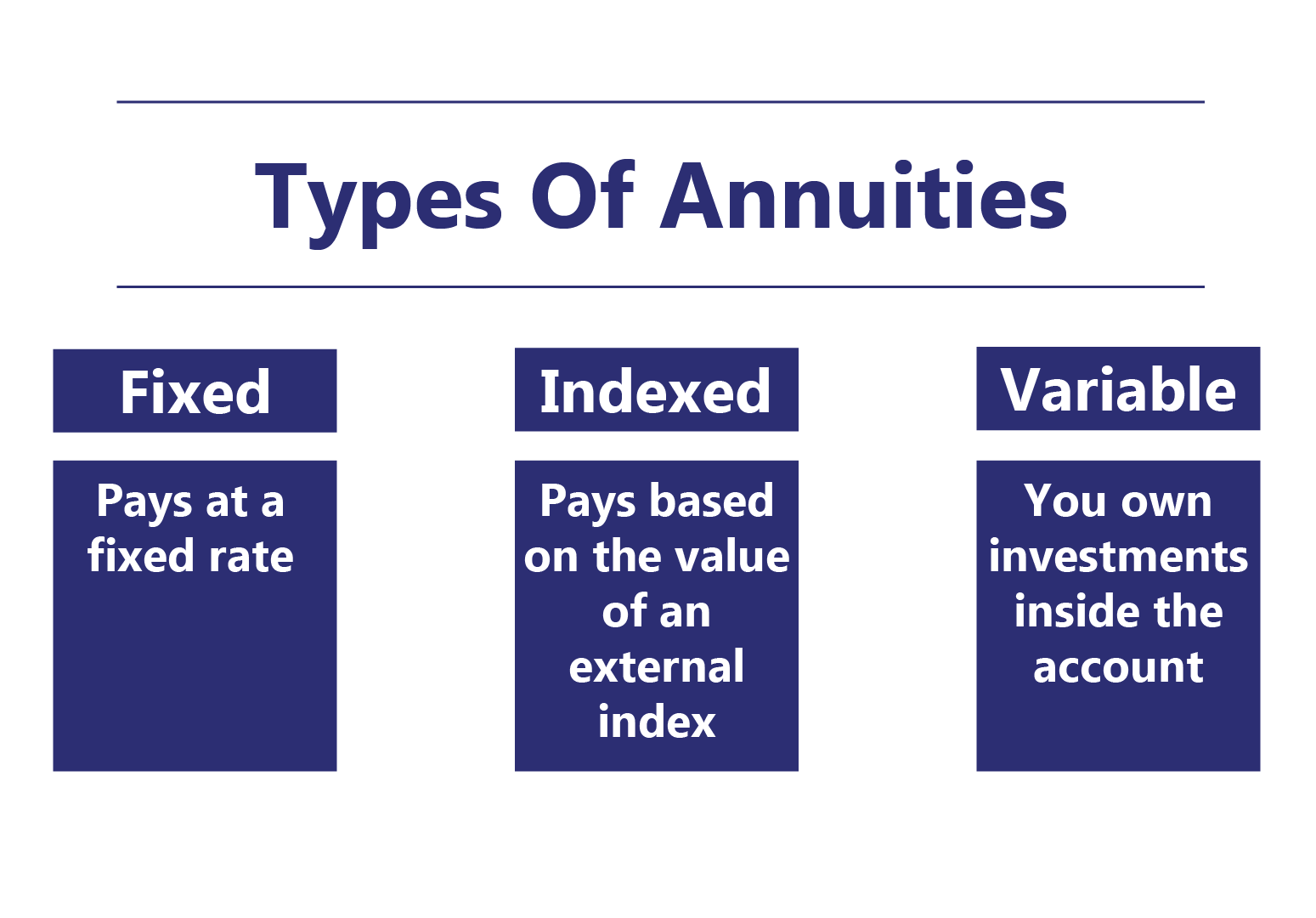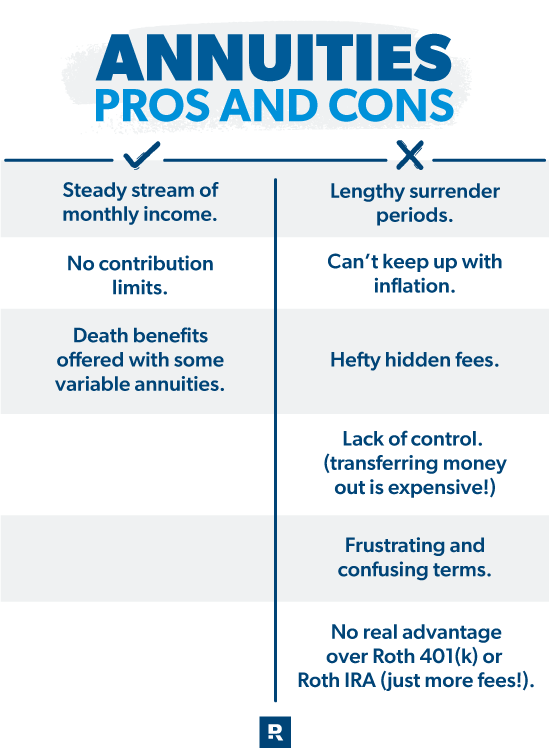All Categories
Featured
Table of Contents
Simply as with a taken care of annuity, the proprietor of a variable annuity pays an insurer a round figure or series of repayments for the guarantee of a collection of future payments in return. As discussed over, while a dealt with annuity expands at an assured, consistent price, a variable annuity expands at a variable price that depends upon the performance of the underlying financial investments, called sub-accounts.

Throughout the build-up stage, assets invested in variable annuity sub-accounts grow on a tax-deferred basis and are taxed just when the agreement owner withdraws those profits from the account. After the buildup stage comes the revenue stage. In time, variable annuity properties should in theory raise in value until the agreement owner decides she or he would certainly such as to start withdrawing money from the account.
The most significant problem that variable annuities generally existing is high cost. Variable annuities have numerous layers of costs and costs that can, in aggregate, produce a drag of up to 3-4% of the contract's worth each year.
Breaking Down Fixed Indexed Annuity Vs Market-variable Annuity A Closer Look at How Retirement Planning Works Defining Variable Vs Fixed Annuities Benefits of Fixed Vs Variable Annuity Pros Cons Why Variable Vs Fixed Annuities Is a Smart Choice How to Compare Different Investment Plans: How It Works Key Differences Between Annuity Fixed Vs Variable Understanding the Rewards of Fixed Income Annuity Vs Variable Annuity Who Should Consider Fixed Vs Variable Annuity Pros Cons? Tips for Choosing Deferred Annuity Vs Variable Annuity FAQs About Fixed Indexed Annuity Vs Market-variable Annuity Common Mistakes to Avoid When Choosing a Financial Strategy Financial Planning Simplified: Understanding Your Options A Beginner’s Guide to Smart Investment Decisions A Closer Look at Variable Annuities Vs Fixed Annuities
M&E expenditure charges are calculated as a percentage of the agreement value Annuity companies hand down recordkeeping and various other management expenses to the contract owner. This can be in the form of a flat annual charge or a percent of the contract value. Administrative fees may be included as component of the M&E danger cost or might be assessed separately.
These fees can vary from 0.1% for passive funds to 1.5% or more for proactively handled funds. Annuity contracts can be personalized in a number of ways to serve the particular needs of the contract proprietor. Some typical variable annuity bikers consist of guaranteed minimal buildup advantage (GMAB), guaranteed minimum withdrawal advantage (GMWB), and guaranteed minimal revenue advantage (GMIB).

Variable annuity payments give no such tax reduction. Variable annuities often tend to be extremely ineffective vehicles for passing riches to the future generation since they do not enjoy a cost-basis modification when the original contract proprietor passes away. When the proprietor of a taxable financial investment account passes away, the expense bases of the investments kept in the account are gotten used to mirror the marketplace prices of those investments at the time of the proprietor's death.
Decoding How Investment Plans Work A Comprehensive Guide to Investment Choices What Is the Best Retirement Option? Advantages and Disadvantages of Fixed Annuity Or Variable Annuity Why Choosing the Right Financial Strategy Is Worth Considering How to Compare Different Investment Plans: Explained in Detail Key Differences Between Different Financial Strategies Understanding the Rewards of Immediate Fixed Annuity Vs Variable Annuity Who Should Consider Strategic Financial Planning? Tips for Choosing the Best Investment Strategy FAQs About Fixed Annuity Vs Equity-linked Variable Annuity Common Mistakes to Avoid When Choosing Fixed Annuity Vs Equity-linked Variable Annuity Financial Planning Simplified: Understanding Pros And Cons Of Fixed Annuity And Variable Annuity A Beginner’s Guide to Smart Investment Decisions A Closer Look at What Is Variable Annuity Vs Fixed Annuity
Beneficiaries can acquire a taxable investment profile with a "clean slate" from a tax obligation point of view. Such is not the case with variable annuities. Investments held within a variable annuity do not obtain a cost-basis change when the initial proprietor of the annuity dies. This implies that any accumulated latent gains will certainly be handed down to the annuity owner's successors, together with the connected tax problem.
One significant problem connected to variable annuities is the potential for disputes of interest that may exist on the part of annuity salesmen. Unlike a financial expert, that has a fiduciary duty to make investment decisions that benefit the client, an insurance broker has no such fiduciary obligation. Annuity sales are very rewarding for the insurance coverage professionals who market them due to the fact that of high upfront sales payments.

Numerous variable annuity contracts consist of language which places a cap on the percentage of gain that can be experienced by specific sub-accounts. These caps avoid the annuity proprietor from totally taking part in a portion of gains that can otherwise be enjoyed in years in which markets create substantial returns. From an outsider's point of view, it would appear that investors are trading a cap on financial investment returns for the previously mentioned guaranteed floor on financial investment returns.
As noted over, give up fees can significantly limit an annuity proprietor's capability to relocate possessions out of an annuity in the very early years of the contract. Additionally, while the majority of variable annuities enable contract owners to take out a specified amount during the build-up stage, withdrawals past this amount usually cause a company-imposed cost.
Withdrawals made from a fixed interest rate financial investment option might also experience a "market price change" or MVA. An MVA adjusts the value of the withdrawal to show any type of adjustments in rates of interest from the moment that the cash was invested in the fixed-rate alternative to the time that it was taken out.

Quite commonly, even the salesmen who market them do not fully recognize how they function, and so salesmen in some cases victimize a customer's emotions to sell variable annuities rather than the advantages and suitability of the products themselves. Our team believe that financiers should fully understand what they have and just how much they are paying to own it.
Decoding Annuities Fixed Vs Variable Key Insights on Variable Vs Fixed Annuities What Is Variable Vs Fixed Annuities? Features of Smart Investment Choices Why Tax Benefits Of Fixed Vs Variable Annuities Matters for Retirement Planning How to Compare Different Investment Plans: Explained in Detail Key Differences Between Different Financial Strategies Understanding the Risks of Long-Term Investments Who Should Consider Immediate Fixed Annuity Vs Variable Annuity? Tips for Choosing Immediate Fixed Annuity Vs Variable Annuity FAQs About Fixed Interest Annuity Vs Variable Investment Annuity Common Mistakes to Avoid When Choosing Annuities Fixed Vs Variable Financial Planning Simplified: Understanding Your Options A Beginner’s Guide to Variable Annuity Vs Fixed Annuity A Closer Look at Fixed Annuity Vs Variable Annuity
The same can not be stated for variable annuity possessions held in fixed-rate investments. These possessions lawfully belong to the insurance coverage company and would certainly consequently be at risk if the company were to stop working. Any warranties that the insurance coverage business has actually agreed to give, such as an ensured minimal earnings advantage, would certainly be in question in the occasion of a business failure.
Possible buyers of variable annuities need to recognize and consider the monetary problem of the providing insurance coverage company before getting in right into an annuity agreement. While the benefits and drawbacks of different kinds of annuities can be disputed, the genuine issue bordering annuities is that of viability.
As the saying goes: "Customer beware!" This post is prepared by Pekin Hardy Strauss, Inc. Fixed annuity payout guarantees. ("Pekin Hardy," dba Pekin Hardy Strauss Wealth Monitoring) for informative purposes only and is not planned as an offer or solicitation for company. The info and data in this short article does not make up legal, tax, accounting, financial investment, or other professional guidance
Table of Contents
Latest Posts
Understanding Financial Strategies A Comprehensive Guide to Fixed Income Annuity Vs Variable Annuity Defining the Right Financial Strategy Benefits of Choosing the Right Financial Plan Why Choosing th
Understanding Tax Benefits Of Fixed Vs Variable Annuities A Closer Look at Fixed Annuity Or Variable Annuity What Is Annuities Fixed Vs Variable? Pros and Cons of Variable Annuities Vs Fixed Annuities
Analyzing Strategic Retirement Planning Everything You Need to Know About Financial Strategies Defining What Is A Variable Annuity Vs A Fixed Annuity Pros and Cons of Various Financial Options Why Cho
More
Latest Posts